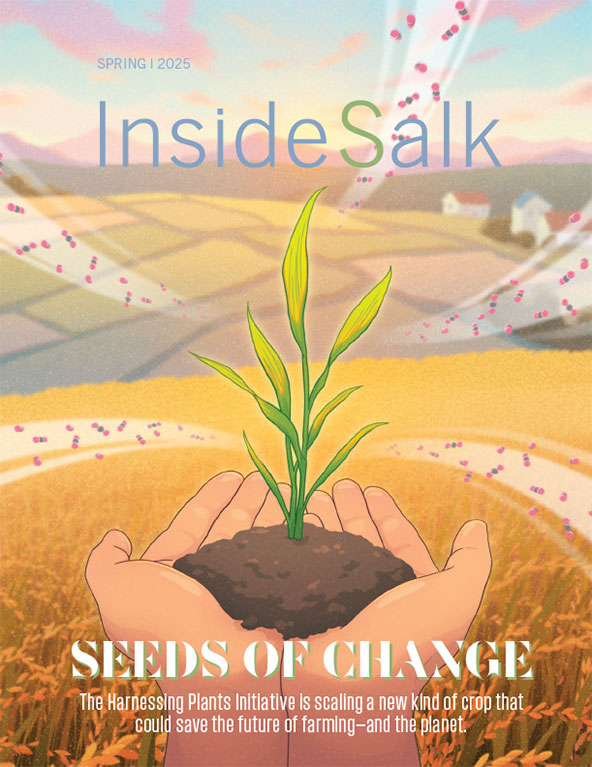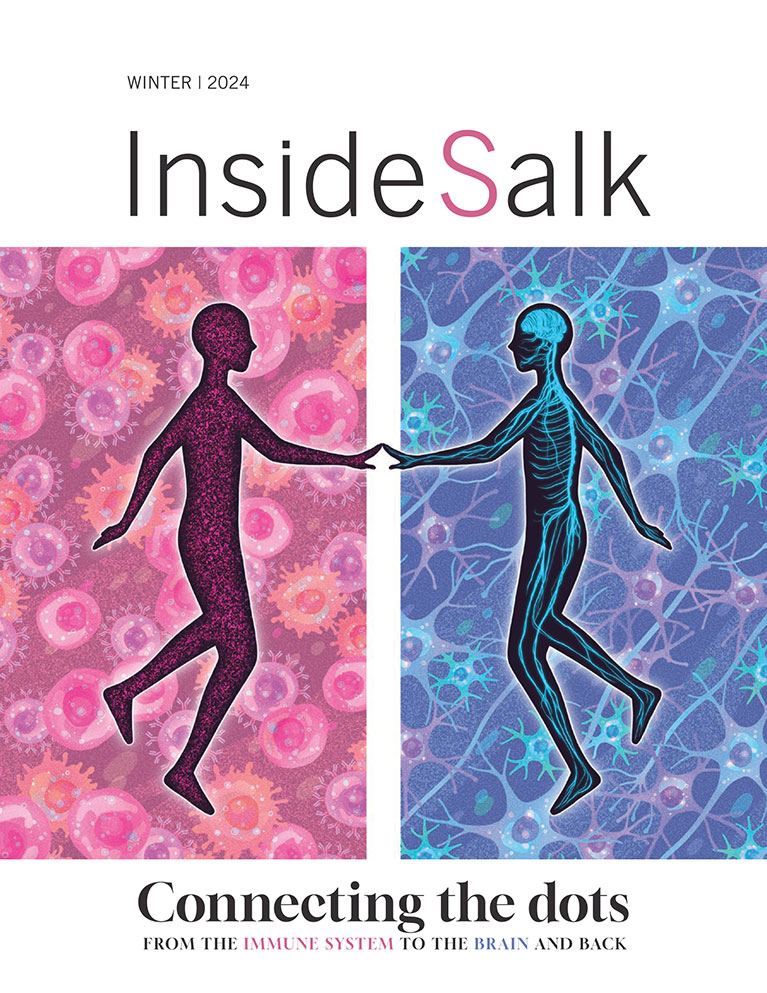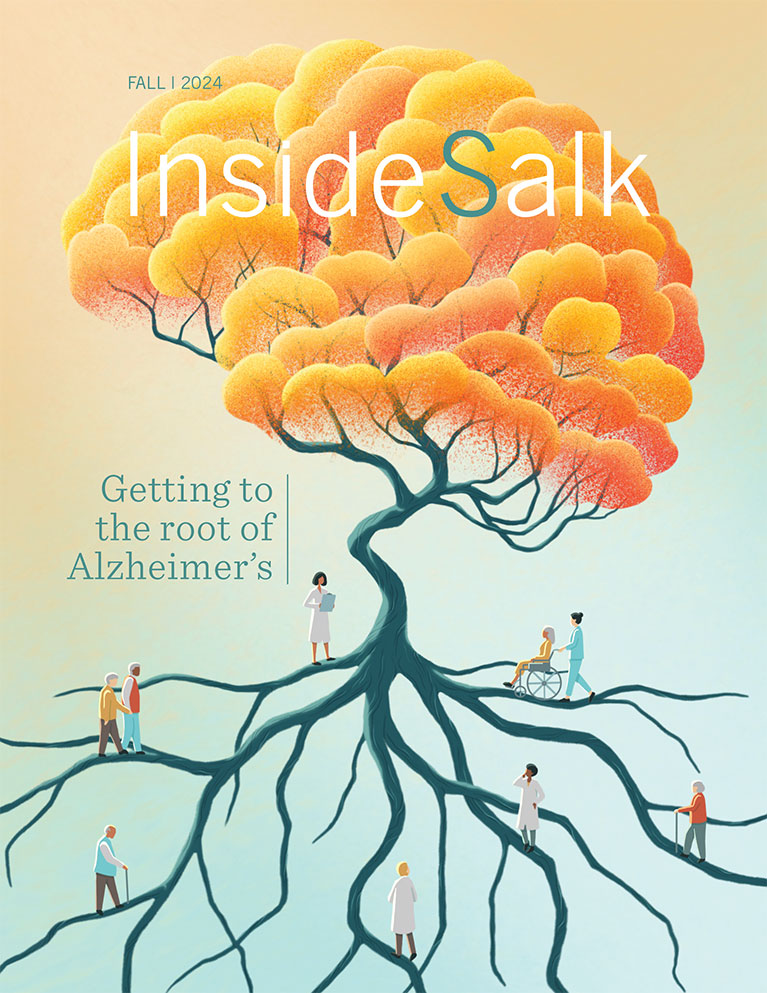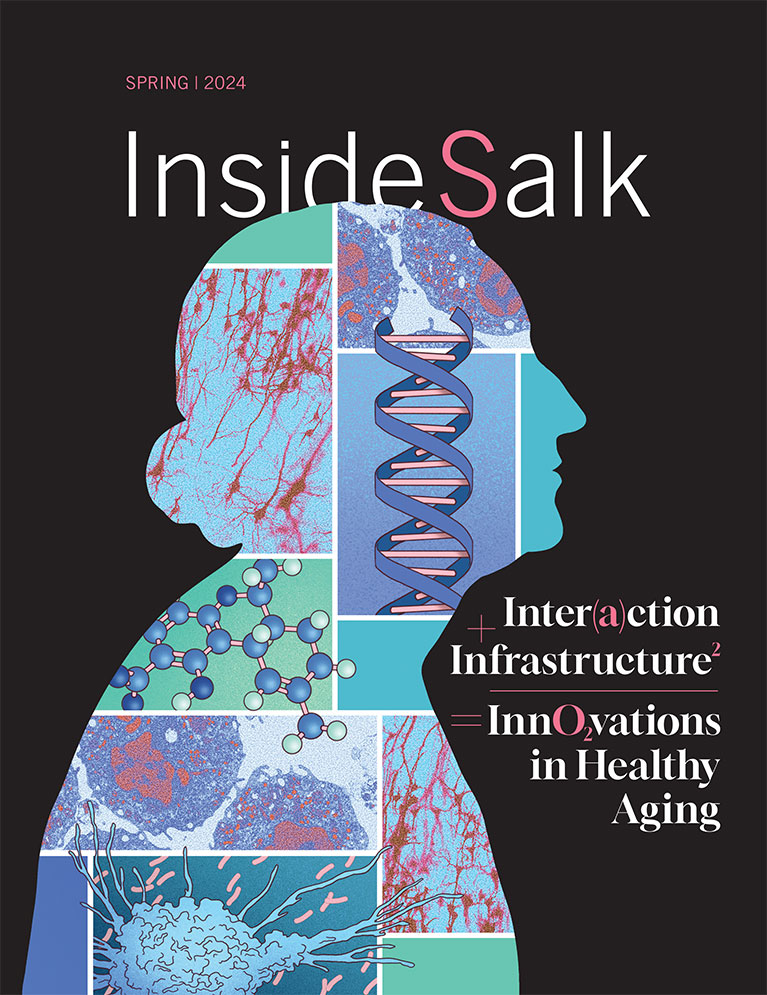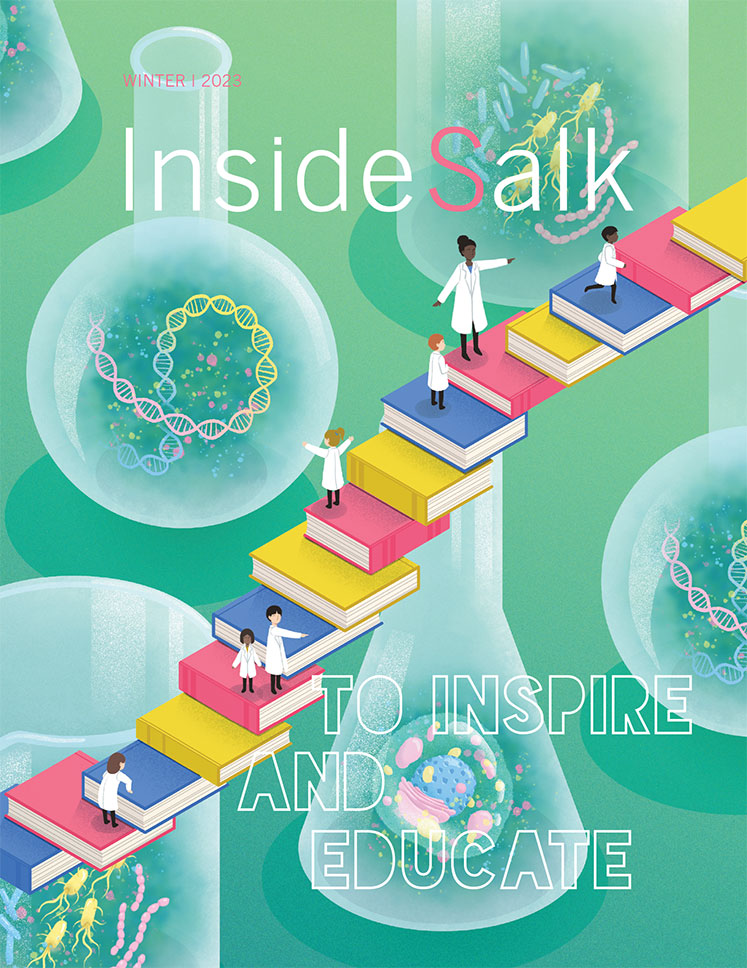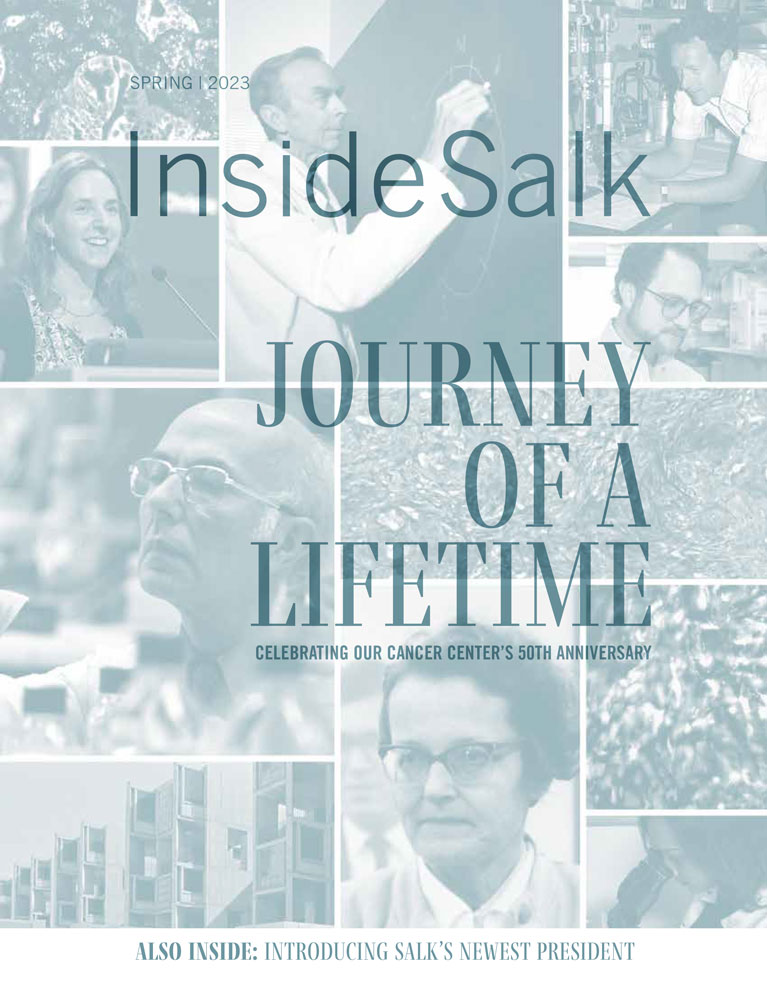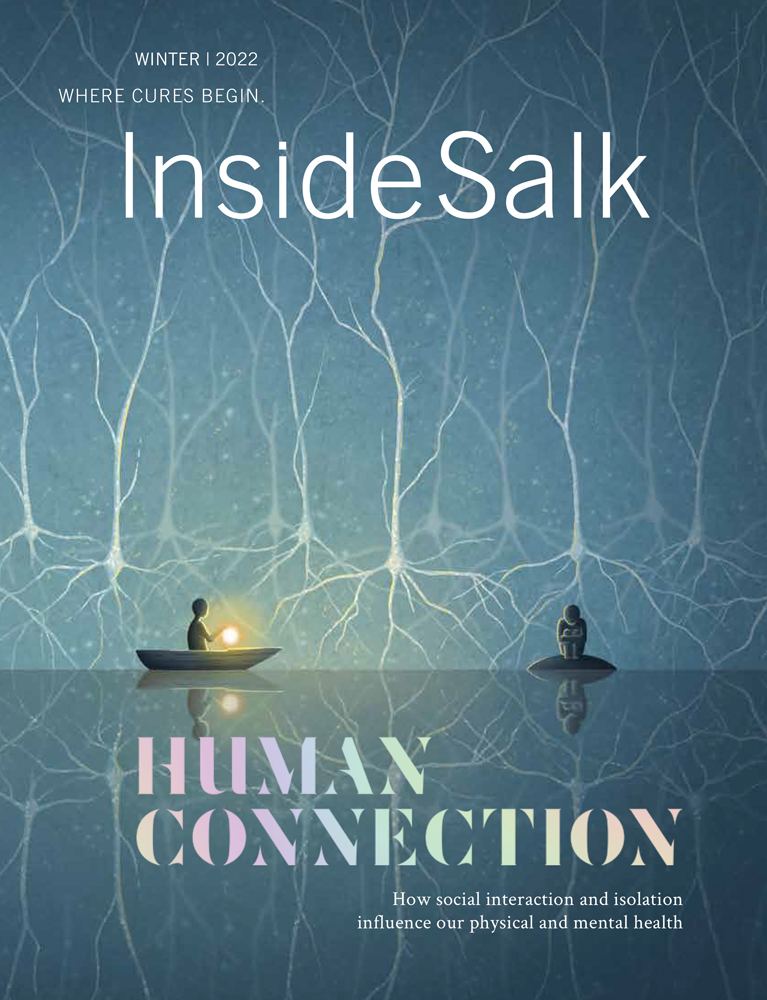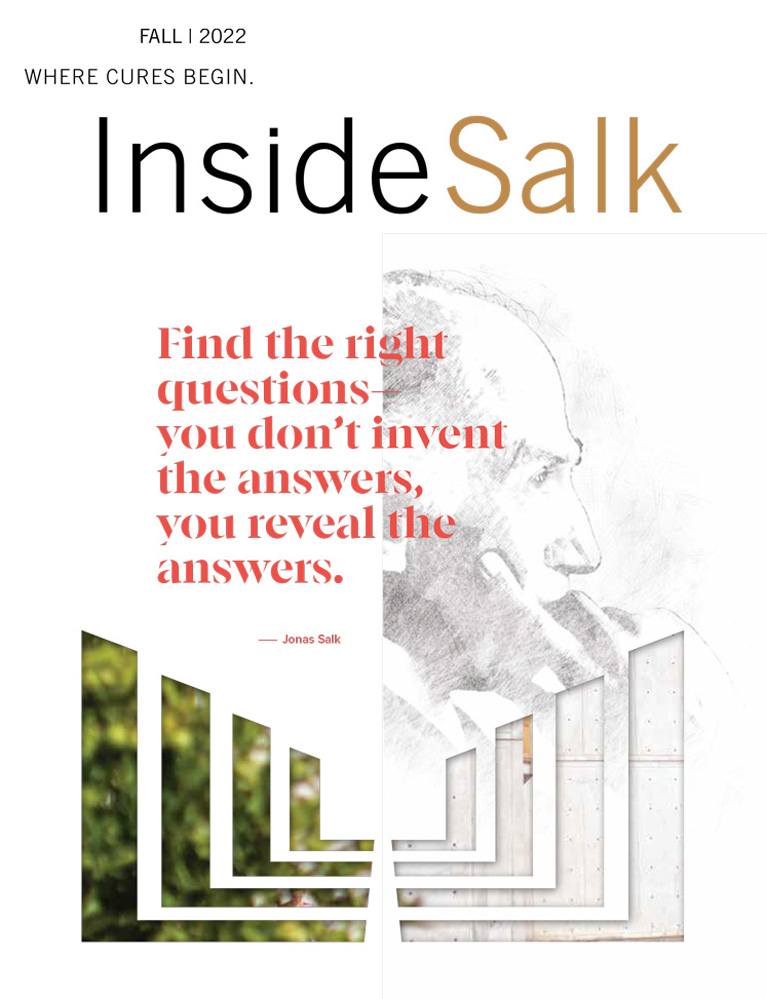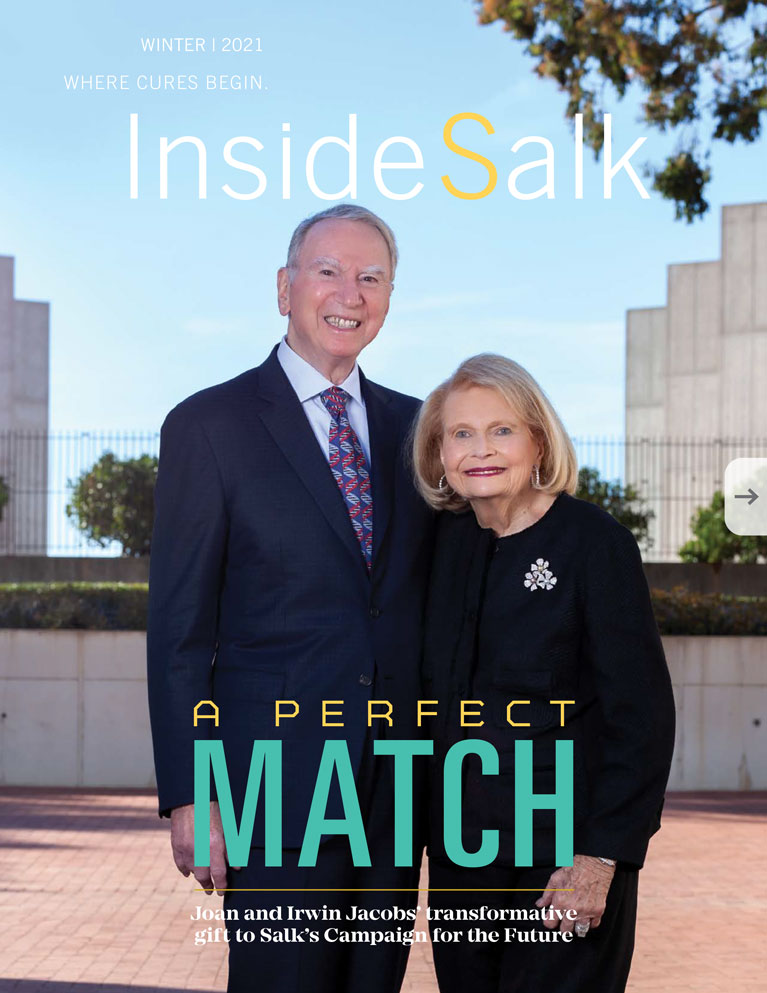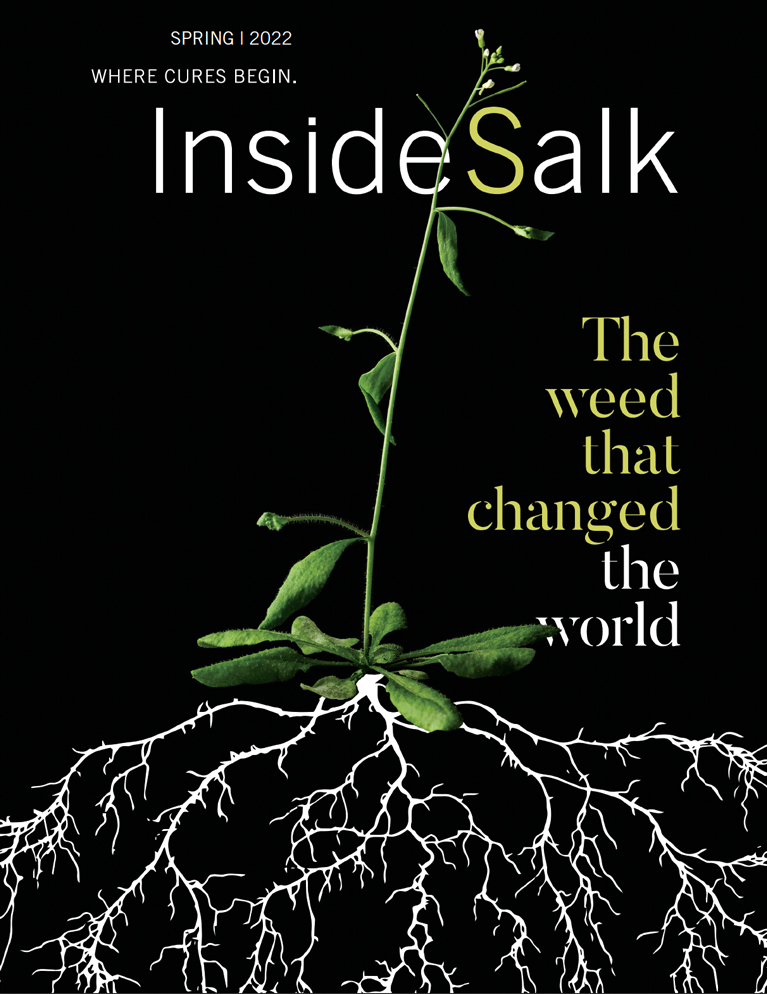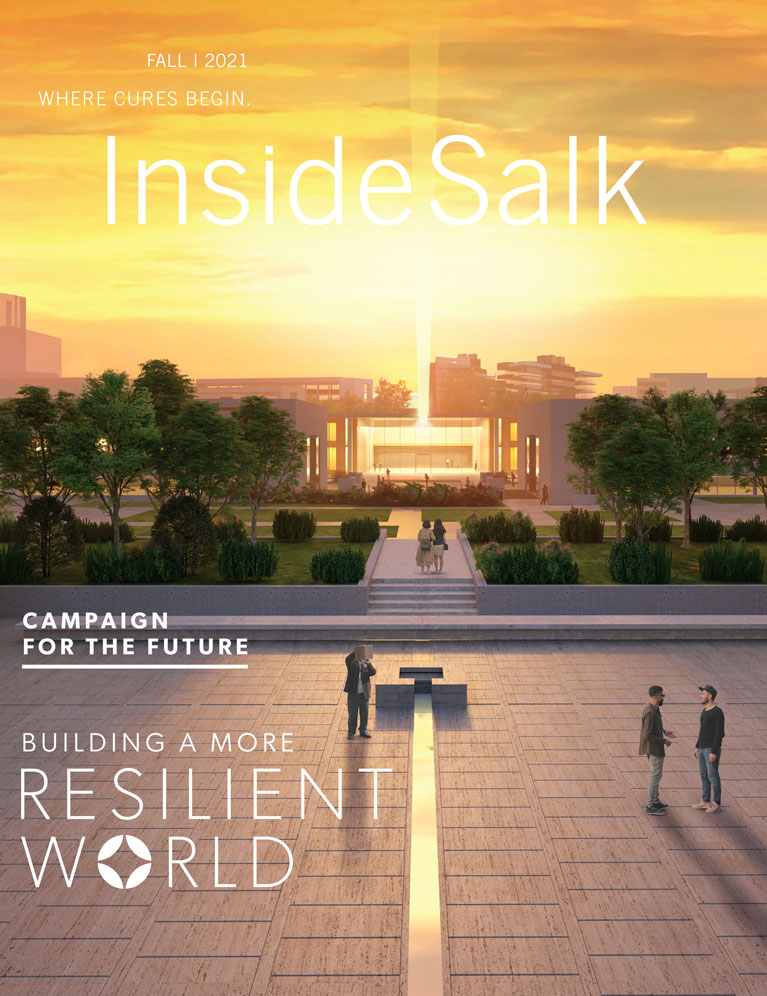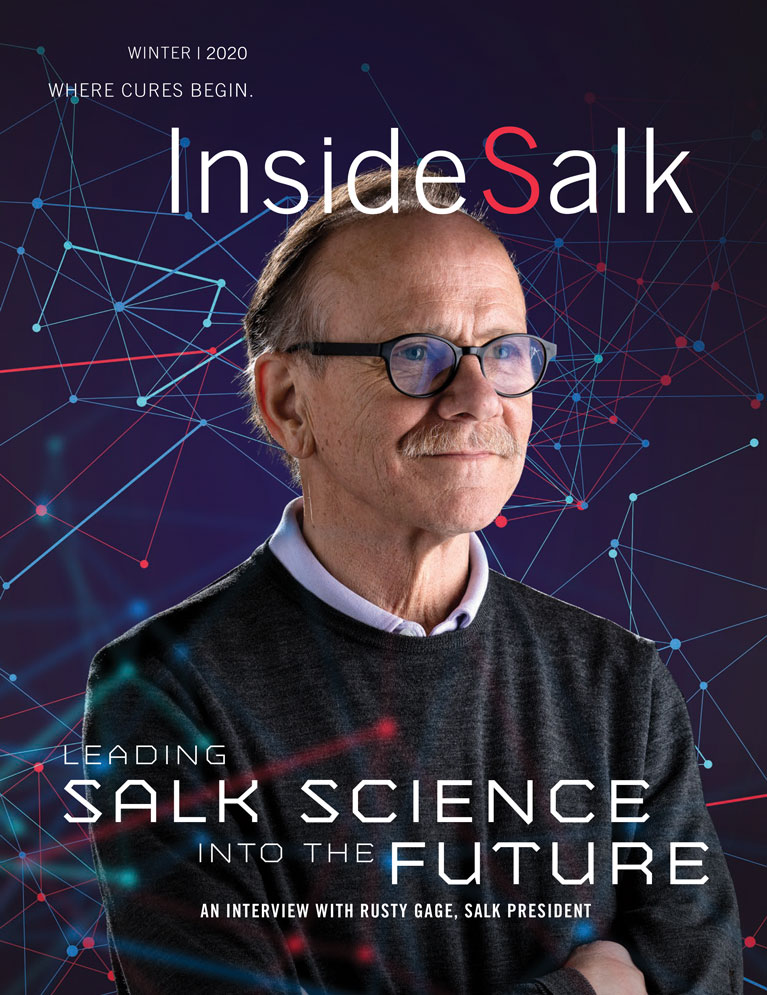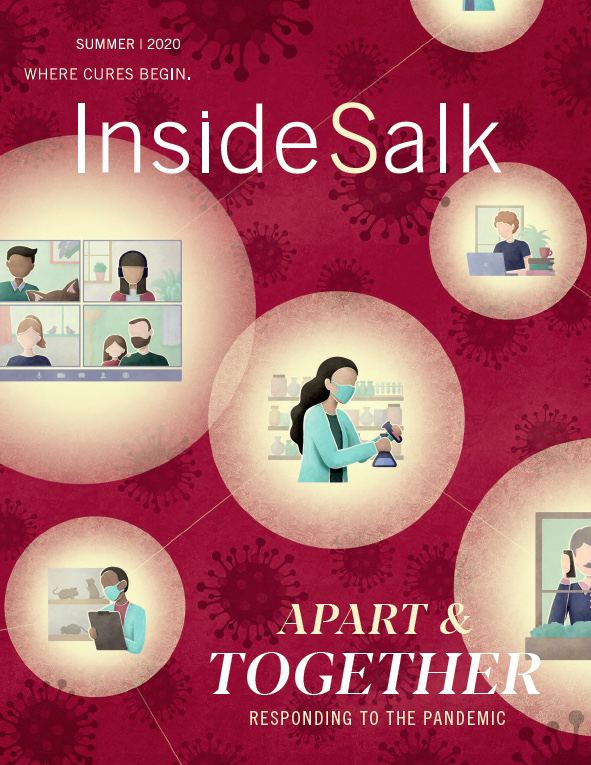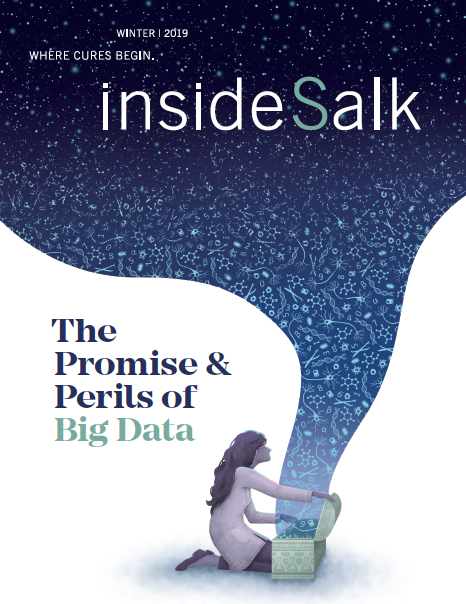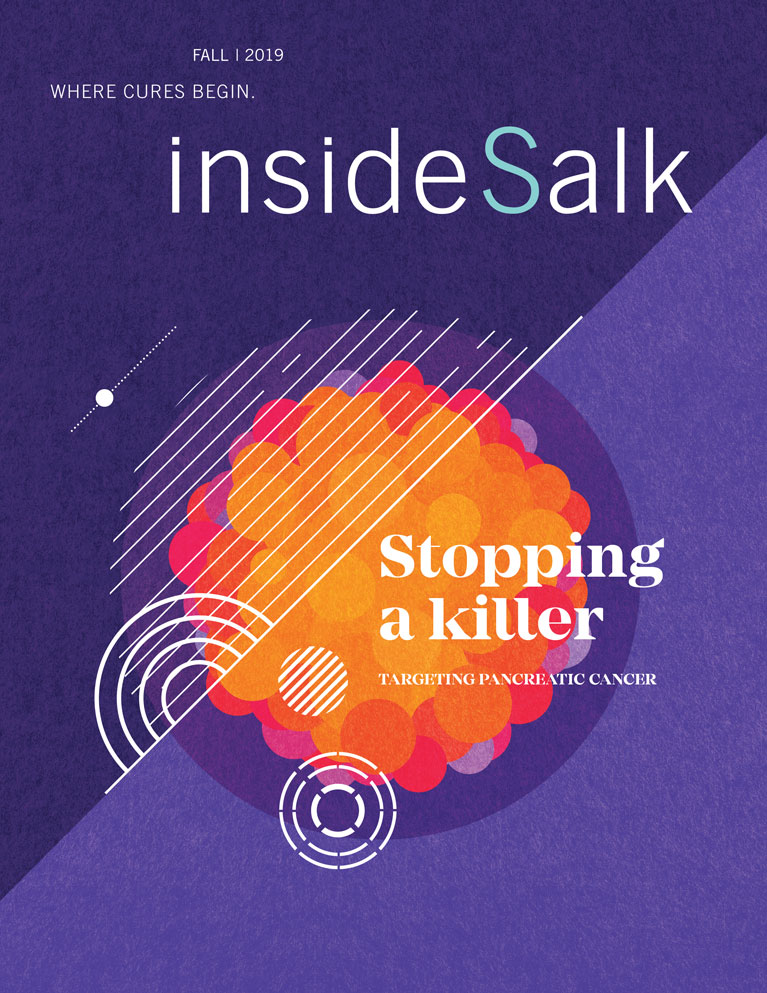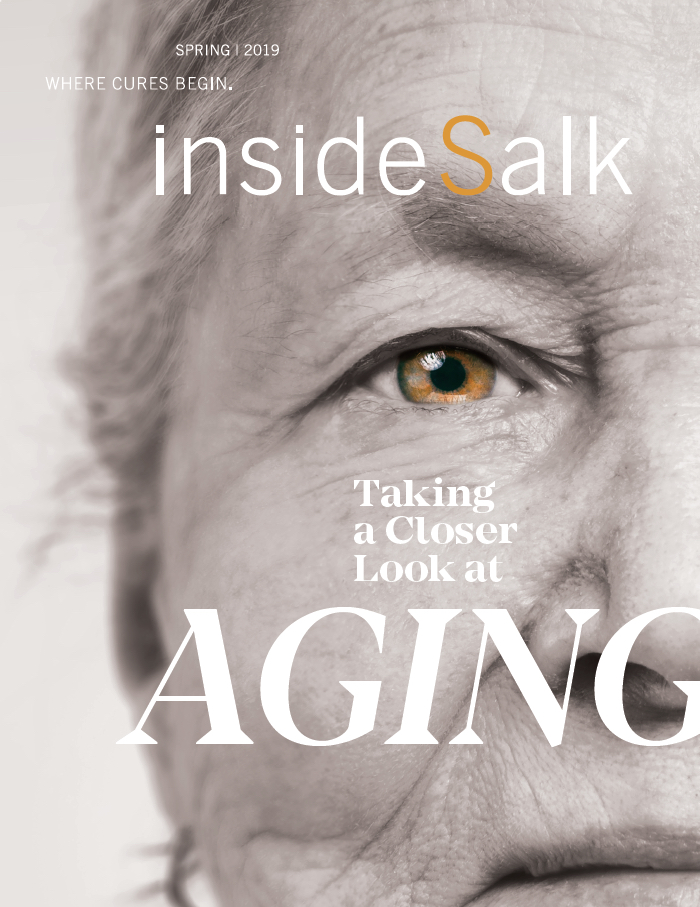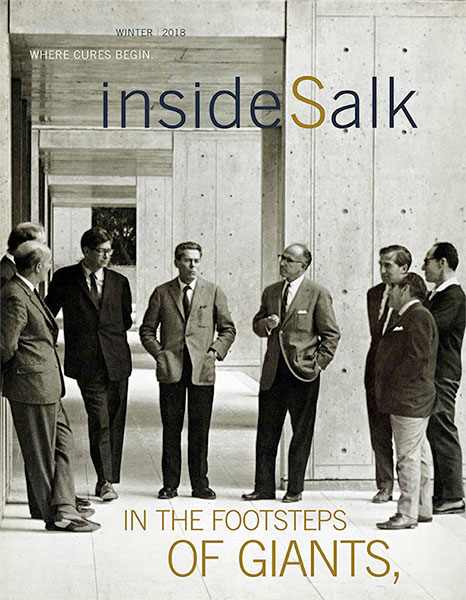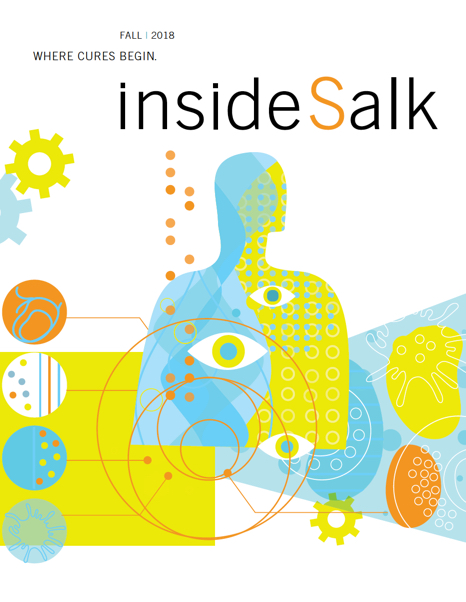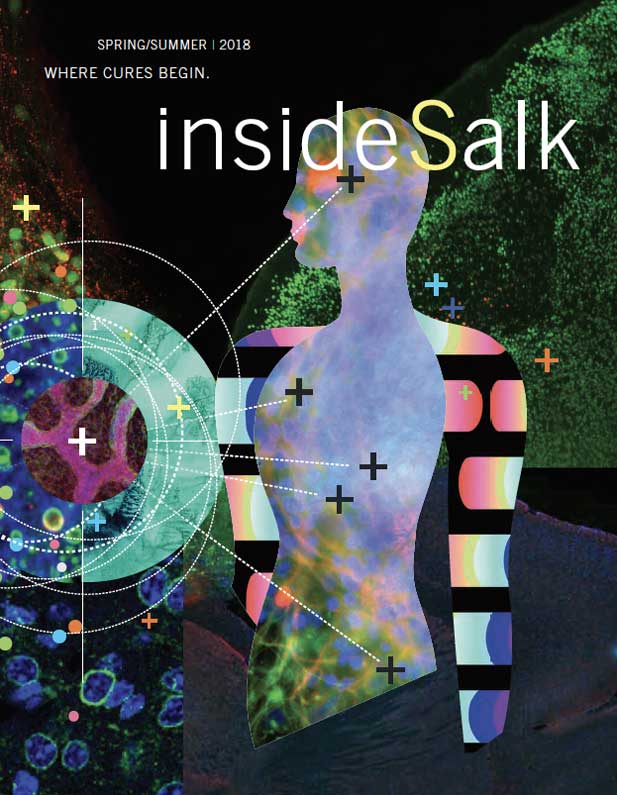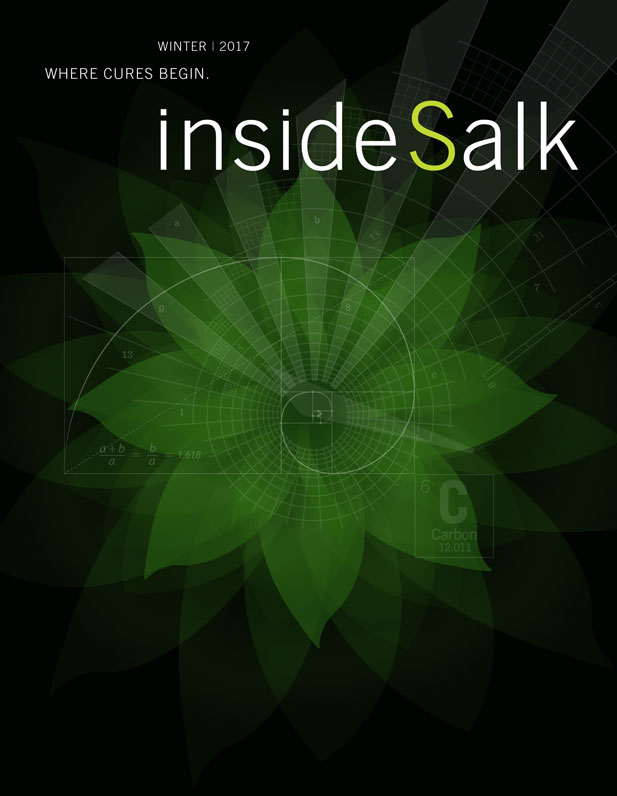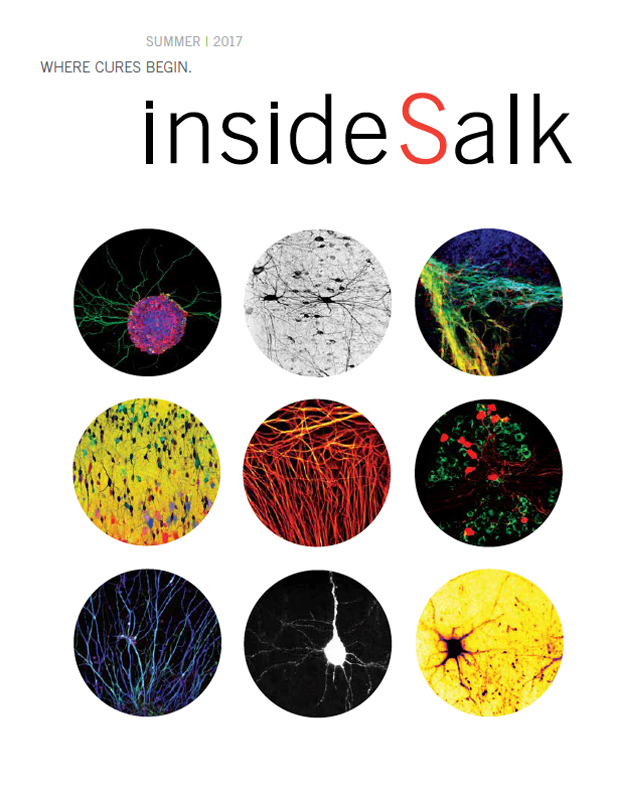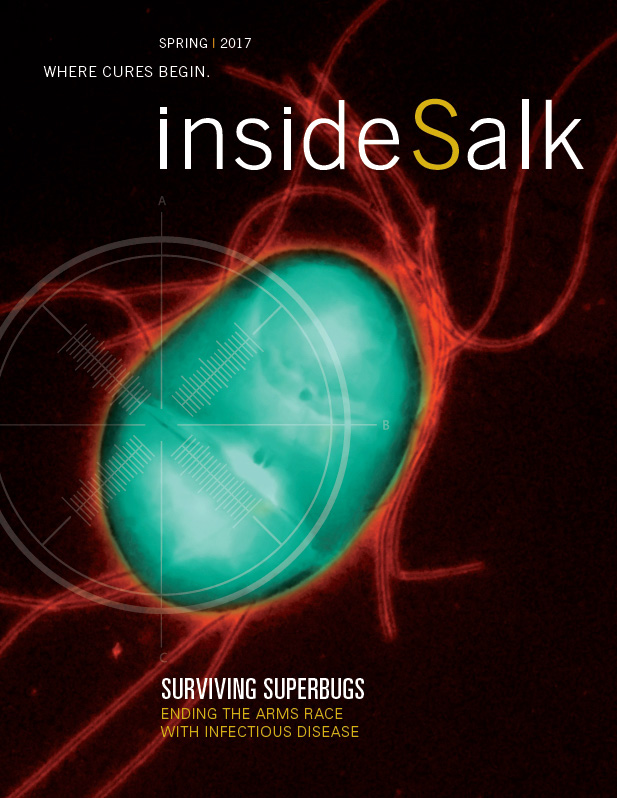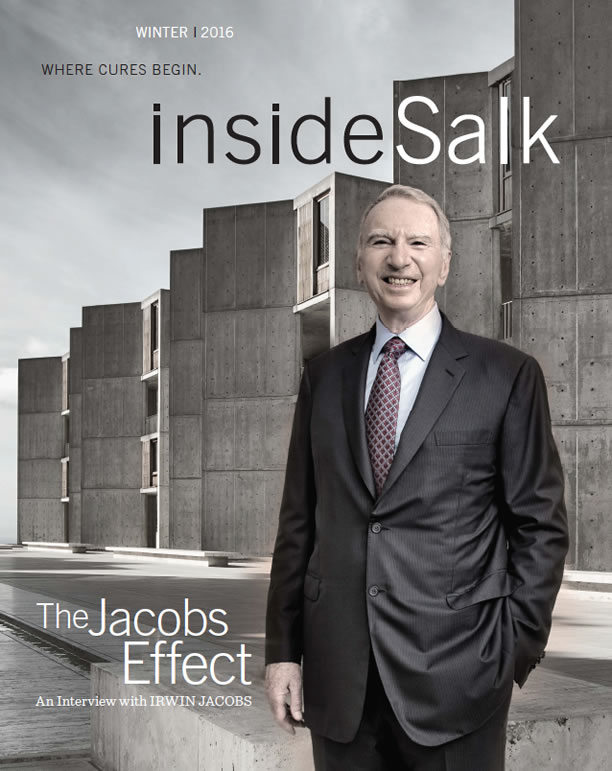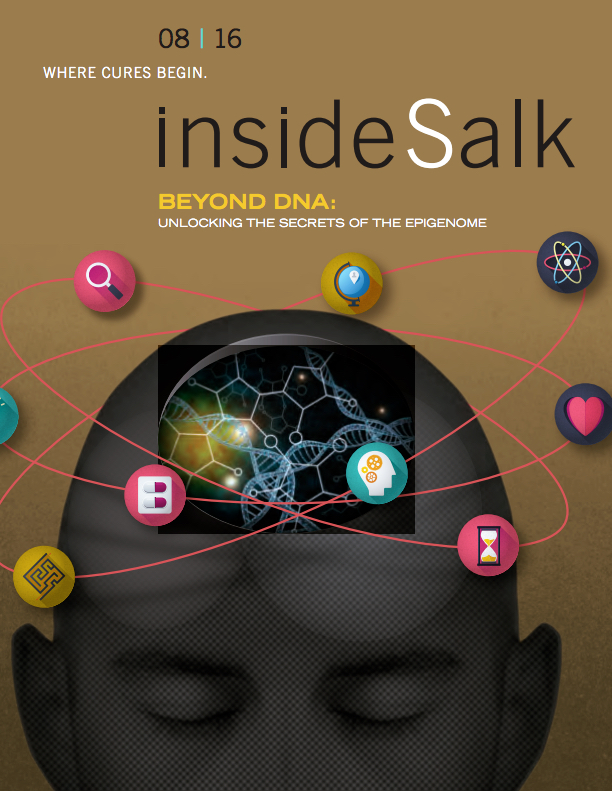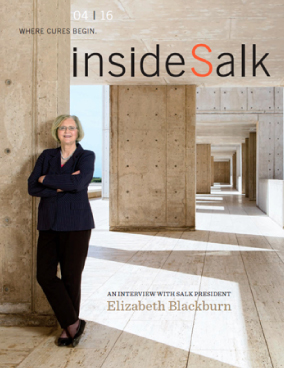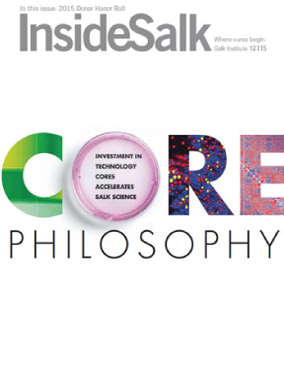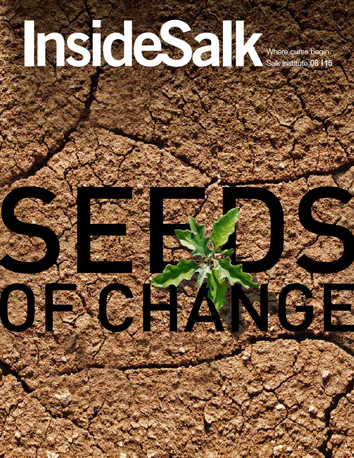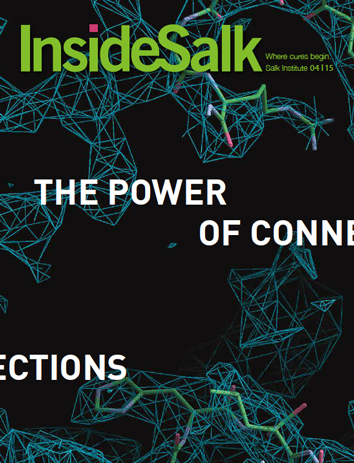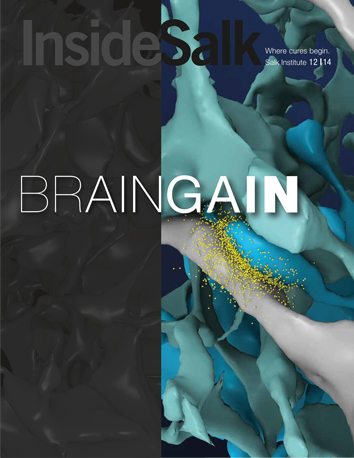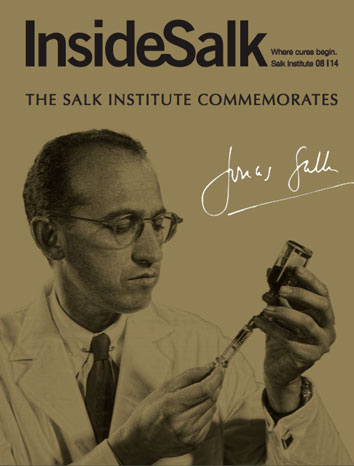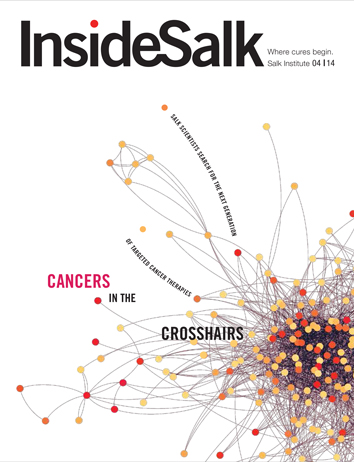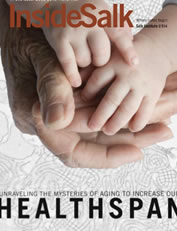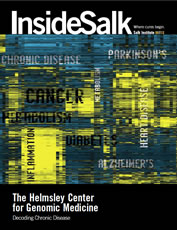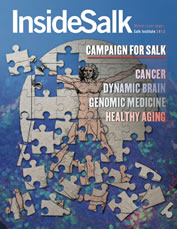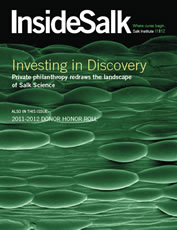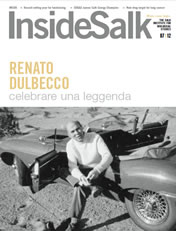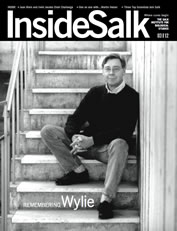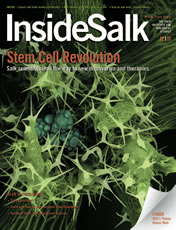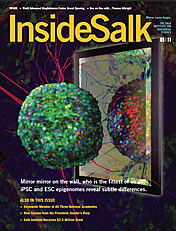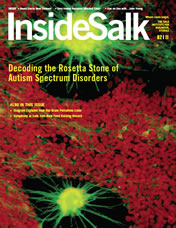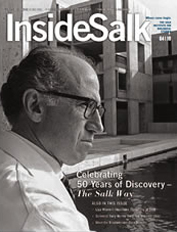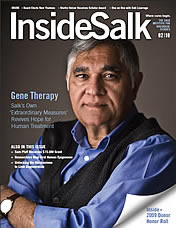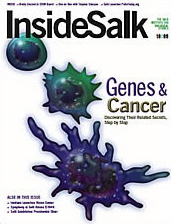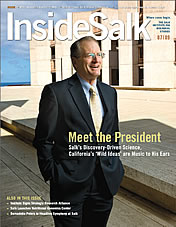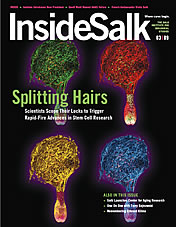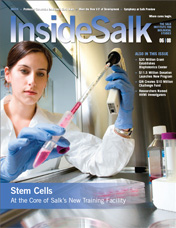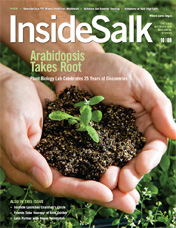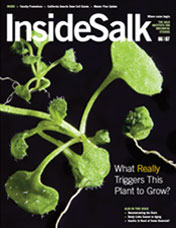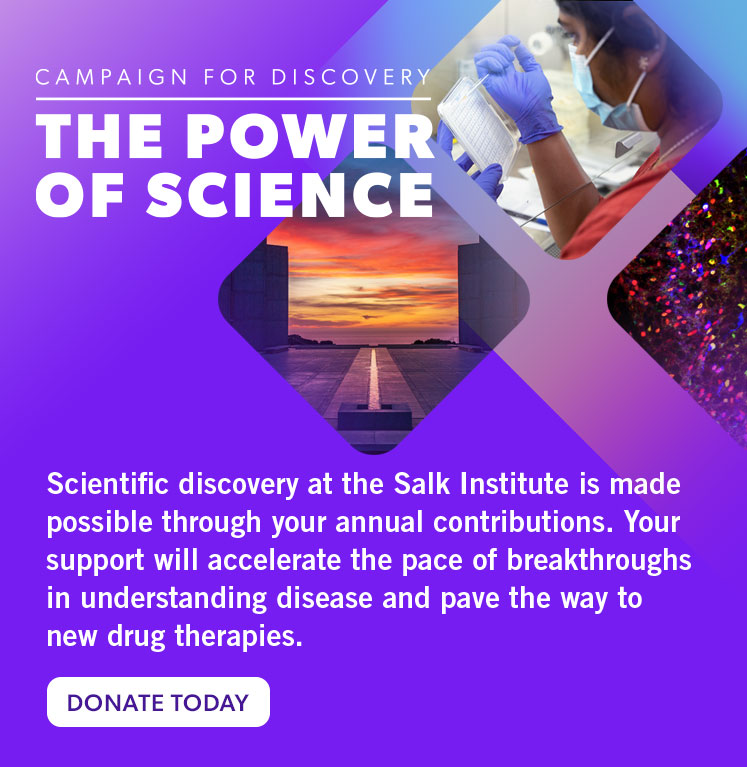In the News
Trustee
Richard A. Heyman
donates $4.5 million to enable early-stage innovative research
Richard A. Heyman, a member of the Salk Institute’s Board of Trustees, and his wife, Anne Daigle, have donated $4.5 million to establish the new Richard A. Heyman Collaborative Innovation Fund to support Institute faculty on collaborative, early-stage studies aimed at big, bold questions.
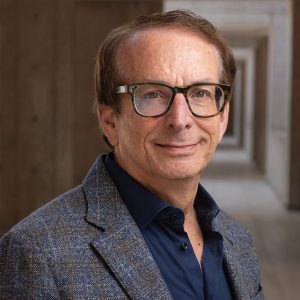
The fund will support research that is often deemed too early, risky, or unconventional for traditional grant funding. Instead, the Collaborative Innovation Fund will enable Salk’s researchers to pursue pioneering ideas, foster collaboration, and unearth discoveries that address some of the most pressing challenges in biomedicine, including cancer, Alzheimer’s disease, and autoimmune diseases.
“We are honored to receive this generous donation from the Heyman-Daigle Family Foundation,” says Salk President Gerald Joyce. “Funds for early-stage studies with the potential to address unmet medical needs are vital to the Salk Institute’s mission of advancing transformative science. By supporting innovation at Salk, we can continue to advance scientific discovery for the benefit of all.”
The new Collaborative Innovation Fund will create opportunities for interdisciplinary collaboration by providing resources that encourage scientists from different fields to work together on complex problems. To be eligible, projects must involve at least two labs working together on novel ideas with the potential for high impact. Grants will be awarded through internal competition, overseen by a Scientific Advisory Board.
Salk has a successful history of using this type of innovation seed funding to spur new discoveries. For example, similar early-stage support made it possible for Salk Professor Sreekanth Chalasani to invent sonogenetics, a technique that uses ultrasound to manipulate neurons, paving the way toward noninvasive deep brain stimulation, cardiac pacemakers, and insulin pumps.
“At Salk, I learned that you have to ask big questions if you want big answers,” Heyman says. “This Collaborative Innovation Fund combines essential aspects of discovery: fresh scientific perspectives, bold questions, and collaboration amongst the faculty members. These combinations should allow us to uncover groundbreaking solutions that will improve the world for generations to come.”
Featured Stories
 Seeds of change: The Harnessing Plants Initiative is scaling a new kind of crop that could save the future of farming—and the planetFarmers and plant biologists are linking arms to build more sustainable, resilient agriculture. Salk scientists are working to enhance plants' natural ability to capture carbon to clean our air and restore environmental stability—all while maintaining productivity for growers.
Seeds of change: The Harnessing Plants Initiative is scaling a new kind of crop that could save the future of farming—and the planetFarmers and plant biologists are linking arms to build more sustainable, resilient agriculture. Salk scientists are working to enhance plants' natural ability to capture carbon to clean our air and restore environmental stability—all while maintaining productivity for growers.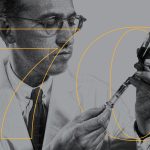 The day polio met its match: Celebrating 70 years of the Salk vaccineSeventy years ago, on April 12, 1955, the polio vaccine developed by Jonas Salk and his colleagues was officially declared “safe, effective, and potent”—a moment heralded as a triumph of medicine over one of the most feared diseases of the 20th century. On this milestone anniversary, it's crucial to remember that fear, and learn from this historic public health success.
The day polio met its match: Celebrating 70 years of the Salk vaccineSeventy years ago, on April 12, 1955, the polio vaccine developed by Jonas Salk and his colleagues was officially declared “safe, effective, and potent”—a moment heralded as a triumph of medicine over one of the most feared diseases of the 20th century. On this milestone anniversary, it's crucial to remember that fear, and learn from this historic public health success. Pallav Kosuri: Making magic out of moleculesA physicist-turned-bioengineer, Kosuri is developing nanoscale technologies that are on their way to transforming how we diagnose and treat diseases. Kosuri’s lab is using DNA to create a suite of biosensors, diagnostic tools, and drug delivery systems.
Pallav Kosuri: Making magic out of moleculesA physicist-turned-bioengineer, Kosuri is developing nanoscale technologies that are on their way to transforming how we diagnose and treat diseases. Kosuri’s lab is using DNA to create a suite of biosensors, diagnostic tools, and drug delivery systems.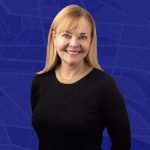 Suzanne Page: Uprooting, replanting, and blooming againIn October 2024, the Salk Institute named Suzanne Page as its new Vice President and Chief Operating Officer. Page has lived and traveled all over the country, developing a strong background in research operations, finance, and legal in the for-profit and nonprofit sectors—leading her to "manifest" her role at Salk.
Suzanne Page: Uprooting, replanting, and blooming againIn October 2024, the Salk Institute named Suzanne Page as its new Vice President and Chief Operating Officer. Page has lived and traveled all over the country, developing a strong background in research operations, finance, and legal in the for-profit and nonprofit sectors—leading her to "manifest" her role at Salk.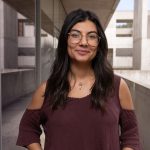 Irene López Gutiérrez: After every storm comes sunshine—and scienceRainy winter weather in Gutiérrez's seaside hometown in Spain led to long days indoors, where she found a science television show that inspired an entire life of education and research that eventually brought her to Salk. Today, she works in Professor Susan Kaech's lab studying Alzheimer's disease.
Irene López Gutiérrez: After every storm comes sunshine—and scienceRainy winter weather in Gutiérrez's seaside hometown in Spain led to long days indoors, where she found a science television show that inspired an entire life of education and research that eventually brought her to Salk. Today, she works in Professor Susan Kaech's lab studying Alzheimer's disease. Michelle Chamberlain named Salk’s new Vice President of External RelationsMichelle Chamberlain assumed the role on April 2, where she will serve on Salk's Executive Leadership Team and oversee all fundraising efforts, communications, community engagement, education outreach programs, foundation relations, and stewardship activities.
Michelle Chamberlain named Salk’s new Vice President of External RelationsMichelle Chamberlain assumed the role on April 2, where she will serve on Salk's Executive Leadership Team and oversee all fundraising efforts, communications, community engagement, education outreach programs, foundation relations, and stewardship activities. Trustee Richard A. Heyman donates $4.5 million to enable early-stage innovative researchRichard A. Heyman, a member of the Salk Institute’s Board of Trustees, and his wife, Anne Daigle, have donated $4.5 million to establish the new Richard A. Heyman Collaborative Innovation Fund to support Institute faculty on collaborative, early-stage studies aimed at big, bold questions.
Trustee Richard A. Heyman donates $4.5 million to enable early-stage innovative researchRichard A. Heyman, a member of the Salk Institute’s Board of Trustees, and his wife, Anne Daigle, have donated $4.5 million to establish the new Richard A. Heyman Collaborative Innovation Fund to support Institute faculty on collaborative, early-stage studies aimed at big, bold questions.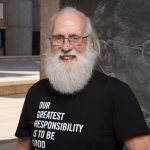 50 years of discovery: Professor Tony Hunter’s half-century legacy at SalkTony Hunter first arrived at the Salk Institute in 1971 as a postdoctoral trainee from the University of Cambridge. Four years later, he officially joined the Institute as an assistant professor and cancer biology pioneer.
50 years of discovery: Professor Tony Hunter’s half-century legacy at SalkTony Hunter first arrived at the Salk Institute in 1971 as a postdoctoral trainee from the University of Cambridge. Four years later, he officially joined the Institute as an assistant professor and cancer biology pioneer.

